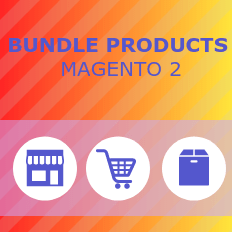1. Understanding eCommerce Platforms

Online retailing has lots of technology-related aspects that force you to make informed decisions, facets that don’t easily pop up when comparing two eCommerce platforms. This explains why the competition grows stronger and stronger in the eCommerce software market. It also highlights the importance of learning more about the options you have available, to decrease the risk of dealing with unexpected technical issues after launching your online store.
Every merchant needs to understand how eCommerce platforms work, identify their business needs and be able to satisfy them properly by choosing the right the eCommerce solution for enterprises or small businesses, from case to case.
Before deciding what internet retailer platform you should use to be able to reach a wider audience and launch your business online, you need to gain insights into the technology eCommerce software use and grasp the fundamental features of online retailing.
Here are the main three parts every eCommerce solution contains:
- The user interface or front-end framework, that assists the admin and user interaction with the entire eCommerce application
- The backend features or data model that supports the store management and the user’s interaction with the site
- The infrastructure that holds the entire platform, from server and storage solutions, devices and network components
Each eCommerce platform has a different configuration of these three core parts. The most used platform models are the following two:
- Web-based Shopping Carts: The most common eCommerce solution use a web browser model with a predefined interface and data model, which limits the site customization level, as well as the infrastructure used, so you will not be able to choose the hosting provider or other services associated with the application. This translated into fewer worries for launching your store online, but also into limited freedom to customize your shop as you desire.
- Licensed Shopping Carts: Some eCommerce platforms are built as an open-source code that provides merchants the basis of the application, while leaving the opportunity to customize the interface as well as the infrastructure, to meet their needs and fulfill their customer’s expectations.
In a previous blog post we’ve sketched some key points of finding out what your eCommerce business needs are and what managing an eCommerce business means, but here are some of the basic features you should look after when choosing your eCommerce platform, to make sure it fulfills all the requirements an online business necessitates:
- A strong and fully equipped content management system
- Customization and extensibility options
- An easy checkout procedure and multiple payment options
- Promotion, discount tools, and email marketing integration
- A user-friendly and search engine-friendly interface and code
- Reporting and analytics tools
- Integrated blog section
Some CMSs will be easier to install, while others will require configuration settings to be made by experienced developers. Some eCommerce platforms will be easier to manage, while others will require advanced search engine optimization techniques, but generally, the benefits you’ll get in exchange will worth the effort.
Selecting the platform you will use to support your website is, therefore, one of the most important decisions that you can make to expand your business in the online market. You can always use extensions, plugins, and add-ons, to add new functionalities to your website and improve its features, but the platform you choose to launch your business online will have the biggest impact on your online presence and your sales performance.
Your main interest at the very beginning should be to have as much control over the content and features of your site as you can possibly get from an eCommerce platform, so that’s why many successful businesses choose open-source solutions like Magento. This option will most certainly require more developer intervention, but the investment is valuable and it will surely help you boost your ROI.
2. Is Magento the Optimum Choice for Online Merchants?
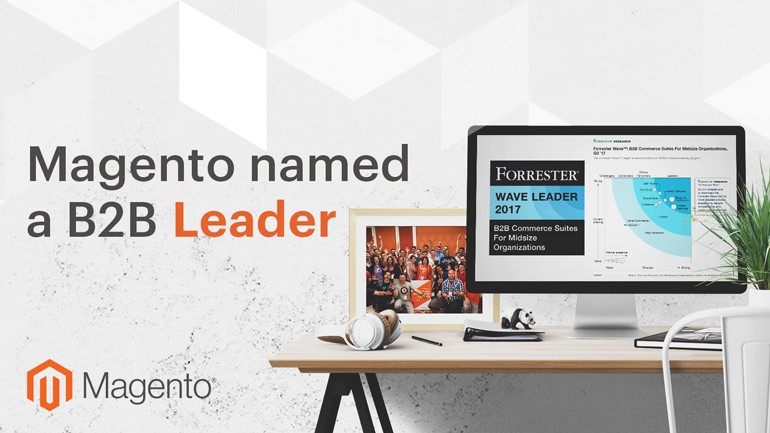
According to BuiltWith.com, now there are 17,749 live sites that are using Magento 2, the newest software edition series of Magento.
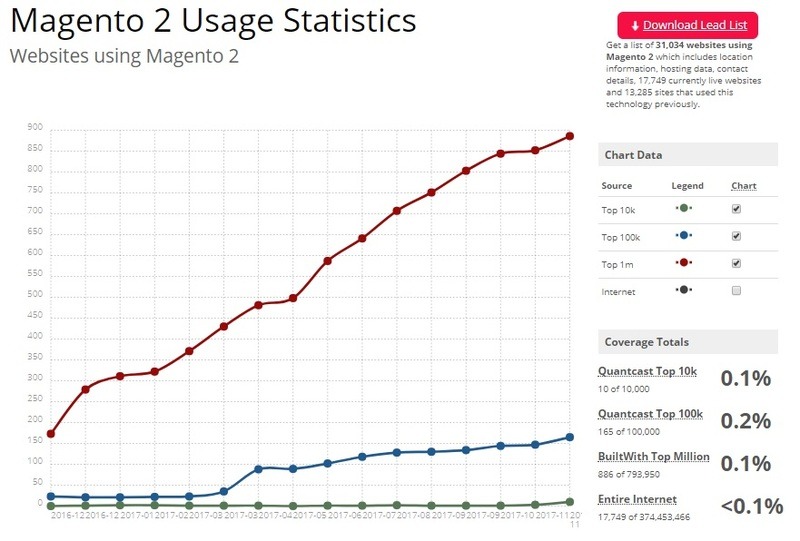
More than this, a total number of 251,739 live online shops are developed on Magento 1x and 2x, and other 289,407 have used Magento in the past since its first launch.
So what makes this platform the number one choice among online merchants?
Magento eCommerce platform is designed with the essential features that allow merchants to build customized online shops for their business and for this reason Magento is the #1 eCommerce platform for huge brands like Coca-Cola, Nike, Samsung, Ford, Lenovo, Nestle Nespresso, Bulgari, just to name a few.
Check out what other big companies use Magento Enterprise and what makes Magento a worldwide leader when it comes to the preferred eCommerce solution for big retailers.
There a number of reasons why merchants favor Magento over other eCommerce software, and we’ll talk about these differences in what follows.
First, you should know that it’s complex and flexible features allow full control over the appearance, content, and all capabilities of an online shop, and lets you adjust your website to your particular business needs, offering an exclusive shopping experience for your clients.
Building an eCommerce website usually start with developing the core features, such as the content and catalog management system architecture, promotion tools, reporting tools, checkout procedure and payment options, and the rest.
But Magento offers these features open-source, ready for customization, together with the opportunity to personalize your websites for the type of goods you sell, or the services you provide, to make it easier for you to reach your customers.
Due to its extensible capabilities, you can install additional features by choosing from thousands of extensions and lots of themes you can find on Magento Marketplace, that can help you improve your online store’s functionality and appearance, and make it more appealing for your target audience.
These are just a bunch of the features this highly scalable eCommerce platform makes available for its entire community of merchants. Starting with November 2015, when Magento 2.0 was released, its features continue to expand in order to provide new ways of helping you achieve a higher conversion rate, such as improved page caching, a new and easy way to customize your file structure, improved website performance, and much more.
Does Magento Have Any Disadvantages?
Choosing the eCommerce platform that works well for your business it’s not a question of choosing between the bad and the good available options. Rather it’s a matter of mapping your financial budget, your business demands and your future marketing plans with an eCommerce platform that is accessible to install and manage, one that offers the desired customizable level for your website and supports the number of products that you plan to sell.
In this respect, Magento doesn’t have any disadvantages whatsoever. You can choose Magento Open Source if you run a small to medium-sized businesses, or Magento OnPremise may be a better fit for you if your business is medium-to-large.
Because both of them are open-source, their installation and setup may require some technical skills or even hiring a Magento developer, depending on the level of customization you want to apply to your website. But in exchange, Magento offers a solid platform and a broad marketplace where you can find all the extensions you need to expand your site’s range of capabilities and overall performance.
3. Magento vs Competitor eCommerce Platforms

With the growing number of eCommerce solutions on the market choosing the no.1 platform that can fully satisfy your business demands becomes harder and harder. Each online business has strong reasons for using one solution over the others, but how do you know which one is the best for you?
No eCommerce solution will serve all purposes: they all have their strengths and downsides, and often enough what works well for your business competitors may not fully serve your own business interests.
To determine what may be the right option for you we’ve prepared an overview of the most popular eCommerce platforms at the moment, compared with the world’s eCommerce leading solution, Magento.
Go through them all to get a quick idea of their capabilities, if you want to have a wide perspective on your available options, or go directly to the comparison that serves your interest.
When it comes to other eCommerce platforms, Magento has two types of competitors:
- Magento Open Source competes, among other solutions, with WooCommerce/Wordpress, Volusion, PrestaShop, Shopify, and OpenCart, Squarespace, Salesforce, Spree, Joomla, and Drupal
- Magento Enterprise competes, among other platforms, with BigCommerce, Oracle Commerce, and Hybris
In what follows you’ll find out more about all these, to help you make the wise choice for your online store.
3.1. Magento vs WordPress

In a previous post, we’ve talked about how to migrate from WooCommerce to Magento and we’ve listed the benefits of moving your shop from WooCommerce to Magento, the migration overview and the tools you can use to successfully make this transition.
Now, we’re gonna look into their key features that make them the best choice for fresh merchants.
Magento and WooCommerce: Which of Them Is a Good Alternative for Lighter Websites
Both Magento Open Source and WordPress are open-source eCommerce platforms, and no matter what you choose, you’ll benefit in both cases from technical support from large communities. This is an important aspect for small merchants, as their initial investment in launching their brand online is low and the support they have from specialized developers is very resourceful, which makes the perfect start for any online business.
Here are the key points of interest for the fresh online retailers among you that think about choosing one of these two platforms to launch their business online:
- Both platforms are programmed in PHP and have open source free versions
- While Magento was specially created for e-stores, WooCommerce is basically a plugin you use with WordPress software
- Magento is recommended for both small and big online retailers websites, and both simple and complex shops, while WooCommerce it’s a better choice if you want a more simple website, that also needs to support large content
- Magento has two distinct platforms: Magento Open Source (Magento Community Edition), which is free, and the paid edition, Magento Commerce On-Premises (Magento Enterprise Edition); WooCommerce has available only one software version that is not specialized for enterprise-level companies
- With Magento, you’ll benefit from a large community of freelance developers and Magento development specialized agencies and Magento Partners that are part of the Magento Ecosystem
- With WooCommerce you’ll also have a wide range of WooCommerce Development specialized agencies and an open source developer’s community
- Magento is well known for its eCommerce specialized features that can help your business thrive, such as out-of-the-box functionality, powerful features to handle big catalogs, advanced payment features, SEO and promotion capabilities, just to name a few. A full list of Magento can be viewed here.
- WooCommerce has its benefits, too. First of all, it has a more approachable installation process and easy-to-control interface. Second, it is the right choice for content-focused websites due to its WordPress content management system features. And third, a WooCommerce shop it’s in most cases cheaper to host
All these aspects make Magento a more complex and at the same time robust choice over WooCommerce, but in the end the right choice should be made after taking into consideration the type of business you have, how big your catalog is, what features will serve your shop better, plus the resources you have available to develop an online shop.
To find out how much will it cost you to open a Magento-based eCommerce website, check out our dedicated blog entry on Magento pricing guide.
3.2. Magento vs Shopify
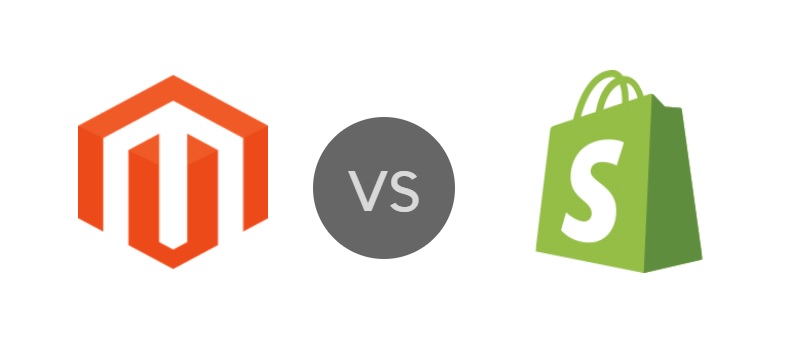
In an earlier article, we’ve presented a comparison between Shopify Plus vs Magento Enterprise, when it comes to developing an enterprise-level shop, in terms of popularity and ease of use, security and SEO features.
We’ve also talked about the benefits of migrating your shop from Shopify to Magento and the tools you can use to make the switch.
Now, we’re gonna look at their main features to help you make an inspired decision, to fit your business needs:
- Magento Open Source offers, for the most part, the same features as Shopify at no cost, however, you’ll need to pay for a hosting service if you go with Magento. For Shopify, merchants will pay a monthly fee of 29$ to 299$, depending on the solution they choose: Basic Shopify, Shopify or Advanced Shopify
- However, when it comes to customer support, you can benefit from 24/7 support if you choose Shopify, but have to provide your own if you choose to go with Magento. In exchange, with Magento, you’ll profit from technical support offered by an entire community of developers that continuously work to improve the platform’s code
- Shopify is more friendly, while Magento requires some technical know-how to manage. Although Shopify is easier to install and manage, compared with Magento, the latter can help you build a customized framework and tailor your website to your target audience to deliver an exceptional user experience
- Both Magento and Shopify offer a wide range of features that merchants of all levels, from small to big retailers, can use to constantly improve their shops and attract more customers. Read here the full list of Magento’s features.
- From an SEO perspective, Magento becomes a more handy option, as it is equipped with lots of features that can make your store both user-friendly and SEO-friendly and efficiently boost your ROI. Plus, there are plenty of third-party solutions you can choose from in Magento Marketplace, that can help you improve your sales performance
Deciding what platform is the right option for your business should also take into consideration your needs, from a marketing and financial perspective, so in the end, it all boils down to what’s more suitable for your own company and which platform can efficiently help you achieve your business goals on the long term.
3.3. Magento vs Bigcommerce
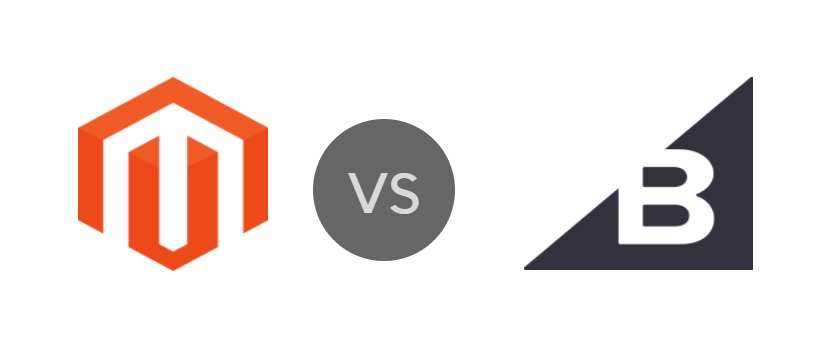
In an earlier post, we’ve talked about the benefits of choosing Magento over BigCommerce and the tools you can use to migrate from Bigcommerce to Magento.
We also covered this topic in terms of deciding which of them is a better option for enterprise-level business, having in view their popularity, ease of use, SEO features, and security options.
Now, we’re gonna pinpoint the first and most important aspects merchants have in view when deciding to launch their business online:
- Magento has a free edition, while BigCommerce does not. You can choose Magento Open Source (free) or Magento OnPremises (formerly Enterprise Edition), depending on your business plans or how big your catalog is. Magento OnPremises license starts from $22,000.00 per year, based on your annual gross sales revenue. BigCommerce license cost varies from 29.95$ to 199.95$ per month, based on the edition you choose to use: Standard, Plus, or Pro. For the enterprise version, the price is customized based on your business, so it’s best to ask for a quote if you want a fixed price to compare the two
- When it comes to the ease of installation and development, BigCommerce has a quick launch option available that helps you go through the process. Magento may require some technical skills or hiring a Magento developer (read more about Magento prices), but the effort will be worthwhile, as it allows you to customize your store based on your needs and your user’s expectations
- In terms of the functions they provide, both Magento and BigCommerce offer the necessary features a developer needs to build a professional online store on open-source code. Yet, customization is a big issue, and at this level, Magento is the leader. BigCommerce is also a good choice, as it provides the basic and most important features a webmaster needs compared with other solutions that are not open-source
- Regarding social media promotions, BigCommerce it’s more powerful than Magento, as it has some featured included by default, for example, you can sell on Facebook and implement a share button on your site. On the other hand, there are lots of Magento extensions you can integrate with your website, some free, some paid
- With Magento, you’ll also have access to support from a strong community of developers, while on the other hand, BigCommerce offers 24/7 support over the phone, email and chat
Need a Magento development team to help you build your online shop?
3.4. Magento vs Volusion

We’ve already talked about the benefits Magento offers over Volusion, and we’ve introduced the tools you can use if you want to migrate your store from Volusion to Magento. Here, we’re gonna list the main aspects that can help you choose between them, in case you haven’t decided yet:
- Magento has more themes, both free and paid, thanks to its big community of developers that are creating them and share their source codes. You can choose your theme from the hundreds of themes listed on Magento Marketplace, where you can also browse through hundreds of extensions. Volusion, on the other hand, is a more straightforward eCommerce solution, with 100 themes available and limited customization. In essence, if the appearance of a website is not going to be your main focus and you’re searching for an out-of-the-box solution, then Volusion might be the answer
- Both frontend features and backend features are more powerful with Magento, and some say that Volusion’s backend is tricky. Now it all depends on your business needs, so if you have a big catalog or you plan to increase your stock level in the future and expand your shop, then Magento it’s a good decision for you on the long run. Although Magento may require some time to adapt your routine administration tasks to its features, in exchange you’ll benefit from powerful site management tools.
- In terms of search engine friendliness and user-friendliness, Magento wins again. With Magento you have all the freedom you need to optimize your URLs, metadata for products and category pages, modify images alt tag, and other features that will increase the visibility of your website in the search engine results pages
- Volusion has a plus when it comes to built-in social features and integration with Facebook, Twitter, and Youtube, as well as sharing options across social network platforms
- Hosting is another important aspect that can help with your decision, as it has a great impact on the customer experience. While with Volusion you’ll benefit from hosting, with Magento you’ll have to find your own hosting solution, be it on-premise or cloud-based. With Volusion you’ll have less to think about, but Magento will give you all the freedom you want to customize your site’s caching system, security, performance in order to provide the best shopping experience for your customers
3.5. Magento vs Squarespace

Despite the fact that Squarespace has gained more customers in the last period, its market share is still very low compared with Magento, which is the leading eCommerce solution on a global level, being present in Top 10K Sites, Top 100K Sites, and Top 1M Sites.
However, there’s no right or wrong answer, and what is good for your business, may not be for another. Here are some of the aspects that you can take into consideration if you’re going to decide between the two, regarding their differences:
- When it comes to the site administration and usage, you’ll get more easily acquainted with Squarespace, with its drag and drop options and easy-to-use layout. On the other hand, Magento may require some time of adjustment to its features, although its more powerful backend and frontend features will be of great help
- In terms of SEO features, Magento is again the leader, as it offers lots of SEO settings free to modify as you wish, to get your pages up in the SERP. Squarespace also allows you to optimize your page titles, add alt tag to your images and other features that can help you create an attractive shop, but its capabilities cannot be compared to the ones that Magento offers
- Themes and appearance are important aspects of an online shop. In this sense, Squarespace offers new ways to capture your visitor’s attention, such as text effects, parallax scrolling, Getty images background integration and youtube video background integration, that makes it a great choice for art selling online shops. In exchange, with Magento, you’ll have thousands of feature-rich, responsive themes to choose from to make your shop more appealing
- When it comes to pricing, with Magento you have two options available: free or paid. The first one, Magento Open Source, and the paid one is Magento OnPremise (formerly known as Enterprise Edition), with a price based on your sales revenue. Squarespace includes Personal, Business, Basic eCommerce and Advanced eCommerce that start from $12 to $40 per month for annual subscription plans.
3.6. Magento vs Oracle Commerce

Magento Commerce OnPremise, which was formerly known as Magento Enterprise Edition, has the same core files as Magento Open Source, but the platform was improved to add more features and functionalities that big retailers can use to manage their online store.
Oracle ATG Web Commerce is a direct competitor of Magento OnPremise, so if you’re trying to choose one of the two, here are some important aspects you need to consider:
- While Magento has both free and paid solutions designed for small, medium and big-size companies, Oracle ATG Web Commerce has only one edition destined to enterprises. While Magento OnPremise (Enterprise Edition) costs starts from $22,000 per year, Oracle ATG platform costs $500,000 in the first year and $110,000 for each of the following years
- Although Oracle ATG is a more versatile platform that can meet every business’ demands, Magento’s OnPremise features supports large catalogs, a great level of customization and additional functionality thanks to its big number of extensions, themes, and add-ons that you can browse in Magento’s Marketplace
- Both of them have multistore and cross-channel commerce features that you can use to expand your online business and attract more and more customers
- When it comes to the support level and documentation, Oracle has available an extensive documentation for any problem you may encounter, and built-in testing features, while Magento has a larger community of developers that are constantly working on improving the code
- They both offer a high level of customization and personalization features that can help you better manage your web store and build an appealing shopping environment for your customers
- They are both very scalable, have strong architecture and integrated reporting and analytics tools to help you measure your site’s performance
Although it can be hard to choose one of them, the decision comes in easily if you take into account the investment, how big your company is and your company’s future prospects. In this case, Magento is a more accessible option that makes available the switch from the open-source to the paid version, while being able to customize your store to meet your needs. Instead, Oracle ATG Web Commerce is a better choice for big corporations that want to connect their physical activity with their online stores.
3.7. Magento vs Salesforce
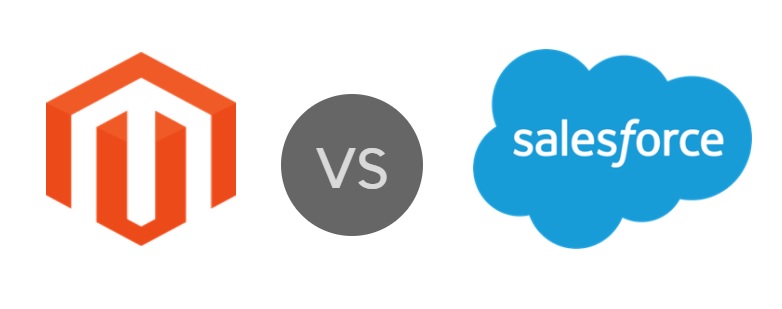
Magento and Salesforce have some good common points, such as:
- they both use cloud technology for data storage
- the option to upgrade your CRM
- features that can help you create a good customer relationship management
This is why some online shops use them together as complementary eCommerce solution, and they choose Magento for its infrastructure and Salesforce for its front-end features.
However, if you have to choose between the two, then here are some key points you should take into account:
- First of all, Magento has been built and designed as an eCommerce solution, while Salesforce it was projected as a CRM platform, so each of them is good in its own way
- The cost you’ll page for Salesforce starts from $200,000, while Magento OnPremise for enterprises starts from $22,000
- Usually, from small to big businesses retailer choose Magento over Salesforce for its functionality and level of customization, that help them create personalized and fully-functional websites to offer an exceptional user experience for their customers
- On the other hand, Salesforce is chosen for its management tools to offer better support for online customers, and other management tasks that can simplify your workflow
- The top features of Salesforce are: omnichannel solutions, access to AppExchange applications to customize your shop, integrated marketing and analytics tools, in-store shopping assistant, branded email templates and email syncing options, web-to-lead forms, online live-chat and options to integrated Salesforce apps with Microsoft Outlook
Magento’s top features include access to Magento Marketplace where you can browse thousands of apps and extensions that can improve your site’s functionality and look, a scalable site architecture, integrated mobile solutions to create mobile apps for your shop, flexible hosting solutions on Magento Cloud or other services you might prefer, an easy and quick checkout option, multilingual and multicurrency support, SEO optimization features. Read here the full list of Magento’s features.
3.8. Magento vs Spree
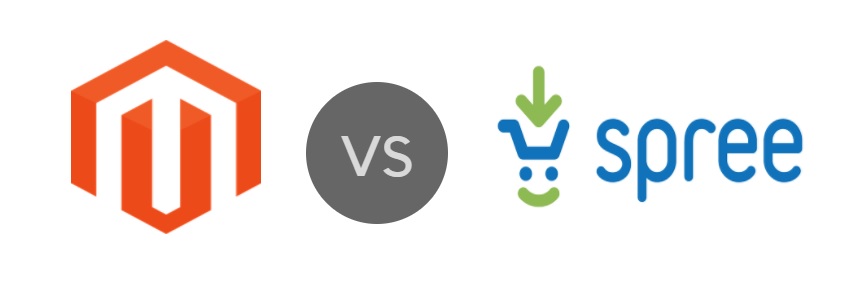
A common characteristic Magento and Spree have is the customization freedom that they offer, that can help you create the website you desire down to the little details, in terms of web store’s functionality features and appearance.
However, there are lots of differences between these two eCommerce solutions, and so before making a decision here’s what to look after:
- When it comes to the price of these platforms, you should know that both Spree and Magento Open Source are free. Magento also has an edition specially developed for big retailers and enterprise level business, Magento OnPremise, which starts from $22,000 per year
- Another main difference is that Spree is developed using Ruby on Rails, which gives it a big advantage over Magento, in terms of shop performance, platform flexibility and ease of maintenance. At the same time, Magento is programmed in PHP, and it offers an all-in-one platform with a lot of features for a good reason, greater level of customization and out-of-the-box functionality
- In the end, the choice you make should meet your business requirement: while Magento is the best eCommerce platform for stores with medium to large inventories, if you have a small inventory and you don’t have plans on increasing your number of products on your store in the future, then Spree may be a good choice for you, easier to install, manage and customize.
3.9. Magento vs Joomla
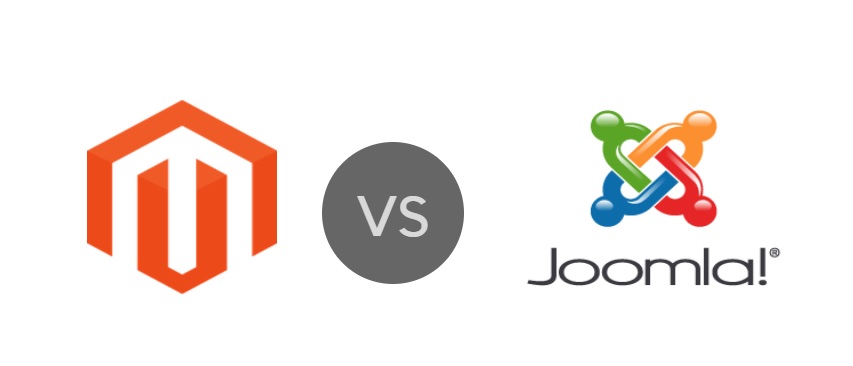
Both Joomla and Magento are open-source eCommerce solutions that are used in a variety of web industries, such as shopping, entertainment, technology, health, news and social.
When it comes to the technical features comparison, here are the outlines:
- While Joomla is simple to install, setup, customize, and manage, Magento requires a technical know-how to set everything in place
- In exchange, Joomla offers great CMS features, while Magento offers a great freedom in setting up the desired shopping environment for your customers
- In terms of extensibility, Magento occupies the front row, as it makes available thousands of extensions, both paid and free, that you can choose from Magento Marketplace to improve your store’s functionality and appearance. Joomla also has a community of professional programmers, developers, and designers that continue developing a professional CMS for its users
- Joomla’s key benefits are low-cost development, user-friendly interface, high security, and SEO features
- On the other hand, Magento is also rich in SEO features, good catalog management features, and handy marketing tools
3.10. Magento vs Hybris

Both Magento and Hybris are open-source eCommerce solutions, but while Magento is written in PHP language, Hybris uses Java. This aspect is important when it comes to the platform’s level of customization and the changes that you want to make at the front-level of your site:
Here are the main differences between the two:
- Developing a web store on Hybris may take longer than using Magento. However, in both cases, you’ll need to hire a specialized developer and both platforms have a huge community of developers, partners, and freelancer that can do the job for you
- While Magento offers a full range of features to build any type of eCommerce website, any customization requires programming or technical skills, but it usually takes longer to develop a website on Hybris than on Magento
- They are both a good fit for B2B and B2C solutions, they offer multi-store features from a single admin account, and they come with built-in search engine optimization tools
- Among Hybrid’s key features you’ll find Product Content Management and Catalog Management, Omni-Channel for B2B and B2C, multi-channel commerce, SEO optimization tools, Sales Performance Management, Order Management Subscription, Optimized Pricing, Customer Financial Management.
- Magento’s key features include Web Design, Shopping Cart, Customer service, Order Management, Mobile Commerce, Product Management, Search Engine Optimization, Marketing Tools, Analytics and Reporting Tools, Multiple Websites. A full list of Magento can be viewed here.
- When it comes to the costs, Hybrid’s license starts from $54,000 a year, depending on the components you choose to implement, while Magento has both an Open Source free version, and a paid OnPremises version, that starts with $22,000 per year. Because of its extensive features and freedom to customize, Magento can be the first pick when it comes to finding an inexpensive way of quickly launching a professional shop online
3.11. Magento vs Drupal

Drupal was specially developed as a content management system, while Magento is designed as a fully-functional eCommerce platform, each of them being very strong in their own way. That is why when you have to decide among the two it’s best to look at their strengths and weaknesses to find out which can better serve your business demands.
Here are the main aspects in which they differ and some in which they are similarly strong to help you make the decision:
- Drupal has two editions, ÜberCart, and Drupal Commerce, and Magento has two solutions Magento Open Source and Magento OnPremise
- Drupal ÜberCart is mostly used for its content publication and management features, and Drupal Commerce for adding eCommerce functionality to the site. By contrast, both Magento editions are professional eCommerce solutions build on a complex structure that offers the possibility to add and manage a wide range of product types with lots of attributes, which makes it a fit software for small to big-sized catalog businesses
- Drupal Commerce needs additional modules to be installed to add functionality to your website, as it happens with the payment system module, while in the ÜberCart edition it is built into the software
- When it comes to the ease of use, both Magento’s and Drupal’s interfaces require some time to adjust and learn so each admin can know his way around the app, where to add, optimize content and extract report data to fulfill his administrative tasks
- Promotional engines are more powerful with Magento, that offers various built-in option to increase the conversion rate and reduce the cart abandonment rate
- Both Magento and Drupal have a rich library of themes that you can use to personalize your site’s appearance
- Search engine optimization features are present on both platforms, Drupal being the leader, as it is primarily built as a content management system
- Drupal is a better option for content websites, while Magento is an ideal option for big traffic websites and big product catalog shops
3.12. Magento vs Prestashop

Both Magento and PrestaShop are open-source eCommerce platforms, which means that you can benefit from all the flexibility you need to customize and personalize your website and make it more appealing to your customers.
Nevertheless, the two have many differences and choosing the one that works best for your shop implies first knowing your business needs and learning more about the features each of them offers.
Here are their main strengths and weaknesses to help you make the right choice:
- Both Magento Open Source and PrestaShop can easily be installed, but there are significant differences among the two in terms of support and troubleshooting technical issues, a situation that bothers more Magento merchants than PrestaShop merchants. In this sense, with Magento, you have access to a big community of developers that are constantly working on improving the platform’s capabilities. In exchange, PrestaShop has a smaller community and the support is more limited
- In Magento’s case, additional customization requires some technical know-how or hiring an eCommerce developer to help you improve your site’s appearance and functions
- However, if you’re looking for a more simple eCommerce operational platform to launch a small business online, PrestaShop might be a better choice for your, as it is easier to install, setup and manage
- On the other hand, Magento a offers multistore system that allows you to launch and manage multiple web store from the same admin account
- Additionally, Magento is a fully-operational eCommerce solution that can handle big catalogs and multiple product attributes, as well as high website traffic. Check out the full list of Magento’s features.
3.13. Magento vs Opencart
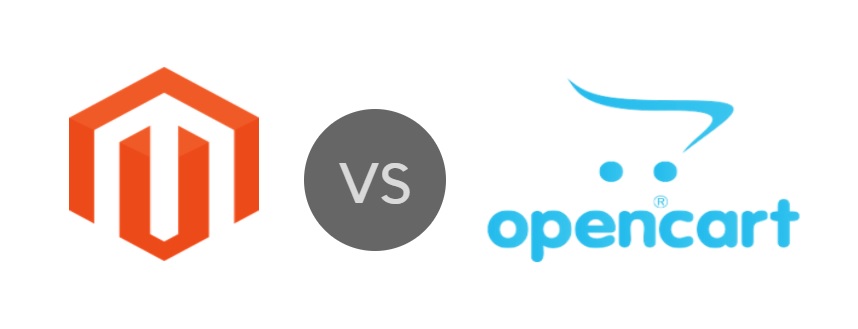
Both OpenCart and Magento are open-source eCommerce systems, which translates to an easy installation process. However, after installation, you may need to hire a developer that can help you customize your website to better serve your business interests and future plans.
Here are the main advantages and disadvantages of these two eCommerce platforms to help you choose the one that is more suitable for your type of business.
- The first aspect to have in view in choosing between the two is the type of store you wish to launch your business with. If your business is a startup and you aim for a more simple and easy way to manage your website, then OpenCart might be the answer for you. However, if you plan to have a big catalog and a big number of products with lots of attributes, and also aim for a high-traffic website, then Magento will best serve your needs
- Magento offers more complex eCommerce solutions and requires some technical knowledge to get acquainted with the system, but the effort is worth it. In exchange, Magento offers a complete set of functions and features meant to serve a wide range of actions on the site, from customizability to optimizing the purchasing process, and reporting
- Magento is the leader, if you are searching for unlimited freedom of customizing your online shop as you desire, although both systems have thousands of third-party extensions you can install for free or paid extensions that can add more functions to improve your site’s usability and security to offer an improved shopping experience to your customers
- For appearance, OpenCart has a small number of themes, compared with Magento. On Magento Marketplace you can browse through hundreds of themes, both paid and free, and modify your site’s appearance to represent your brand
- In terms of search engine optimization features, Magento is the winner, while OpenCart is less oriented on mobile and doesn’t support URL transcription
5. Conclusion

The secret of making the right choice when you’re searching for an online retailing platform is to identify your website’s purpose, your business plans and map your demands with the features eCommerce solutions offer.
Thus finding the appropriate eCommerce engines to launch your brand in the online market is not a matter of dividing the available software options between the good and the bad, but mostly to understand what each of them offer and be able to identify the one that is the most suitable for your available resources and your business demands.
There are many popular eCommerce CMSs available on the market, some of which are free, others that are paid, some that are web-based, others that are open-source, but in the end the choice you’ll be making should first take into the account the features they offer to make your job easier and help you achieve a higher ROI.
Regardless of the CMS you’ll end up using, asking for professional assistance from experienced eCommerce developers is inevitable, either for expanding your shop’s functions, changing its appearance or troubleshooting management issues.
A good perspective you need to keep in mind is that the platform you opt for should meet your expectations in terms of: the freedom to customize your shop as you desire, the built-in features that can meet your management as well as promotion and SEO needs, the level of site-performance and security, and also the availability of attractive themes, all of which are necessary to create an ideal shopping environment for your target audience in the online market.

